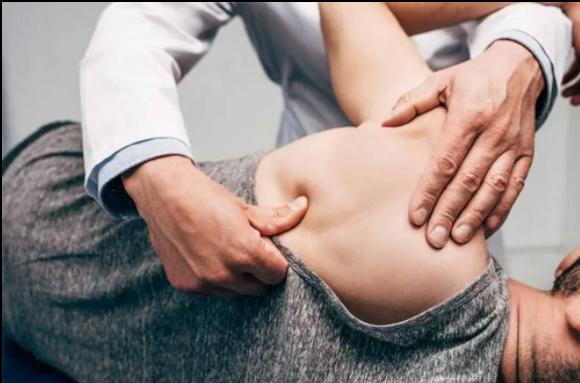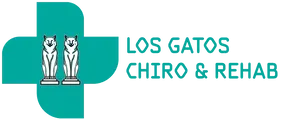
Understanding Myofascial Release Technique (MRT)
Introduction:
Myofascial Release Technique (MRT) is a manual therapy that targets the myofascial tissues in the body to relieve pain and increase mobility.
Myofascial tissue refers to the connective tissue that surrounds and supports muscles and other structures in the body. This tissue can become restricted and cause pain, discomfort, and movement limitations when injured, damaged, or has scar tissues and adhesions.
MRT is a highly effective therapy that can help to release these restrictions and improve overall health and well-being. In this article, we will discuss the benefits and techniques of MRT, and how it can help improve your quality of life.
What is MyoFascial?
The term “myo” is derived from the Greek word for muscle. In anatomy, a muscle typically consists of three distinct components: the muscle belly, which is the main red bulk of the muscle; the muscle tendon, which serves as the attachment site between the muscle and bone; and the enthesis, which refers to the point of attachment between the tendon and bone. Any of these three components can be injured and cause pain, discomfort, and limitations in movement.
Fascia is a type of connective tissue that encompasses, supports, and separates muscles and internal organs beneath the skin. It is primarily composed of collagen and serves to stabilize and attach these structures. Like engine oil, the hyaluronan present between the fascia layers facilitates movement and elasticity within the tissue, allowing for smooth and friction-free movement. When hyaluronan becomes dehydrated, it can thicken and become sticky, impairing mobility and causing discomfort in the muscles and joints.
The myofascial system is a network of connective tissue that extends throughout the entire body. It plays a crucial role in maintaining stability, connecting muscles, bones, and joints, and supporting the movement of internal organs.

How does MRT work?
MRT works by applying sustained pressure to the restricted myofascial tissues. This sustained pressure helps to stretch and lengthen the tissue, decrease inflammation, and increase fluid and nutrition flow into the tissue, releasing any adhesions and restrictions in the area. This results in improved blood flow and circulation and reduced pain and discomfort.
MRT can be performed on various body parts, including the neck, back, legs, and arms. The therapist will use their hands, elbows, and other specialized tools to apply pressure to the affected area, helping to release the myofascial restrictions.
What’s the difference between MRT and a regular massage?
Myofascial Release Technique (MRT) and traditional massage are both techniques used to alleviate pain and discomfort, but they differ in several key ways.
MRT is a targeted manual therapy that focuses specifically on specific problematic myofascial tissue that is connected to surrounding muscles and organs. The therapist uses gentle, sustained pressure to release restrictions and adhesions in the myofascial, reducing pain and improving range of motion. MRT is often used to treat conditions related to chronic pain, headaches, and musculoskeletal problems.
In contrast, traditional massage is a broader term that encompasses a variety of techniques aimed at promoting good feelings, relaxation, and reducing muscle tension. This may include kneading, rubbing, tapping, and vibration, among others. Massage can also be therapeutic for certain conditions, such as reducing stress and aiding in recovery from injuries, but it does not explicitly target the fascia or specific tissue.
So, the main difference between MRT and regular massage is the focus and approach. MRT is targeted explicitly at a specific fascia, while traditional massage encompasses a broader range of techniques to promote relaxation and reduce muscle tension.
What are the benefits of MRT?
MRT offers numerous benefits to those who suffer from chronic pain and mobility issues. Some of the benefits of MRT include:
- Reducing pain and discomfort
- Improving mobility and flexibility
- Increasing circulation and blood flow
- Reducing muscle tension and tightness
- Reducing inflammation when it’s not needed
- Improving posture and reducing the risk of injury
- Relieving stress and tension
Techniques used in MRT
There are several techniques used in MRT to release myofascial restrictions and improve overall health. Some of the most common techniques include:
- Direct Myofascial Release – This technique involves applying direct pressure to the affected area using the therapist’s hands or tools.
- Stretching – This technique gently stretches the affected area to release any restrictions in the myofascial tissue.
- Cross-Fiber Friction – This technique involves applying pressure across the fibers of the affected area to release adhesions and improve circulation.
- Compression – This technique involves compressing the affected area to increase circulation and reduce pain and discomfort.
Frequently asked questions about Myofascial Release Technique (MRT)
- Is MRT painful? MRT is usually not painful, but some mild discomfort may be experienced during the treatment. The therapist will adjust the pressure based on your comfort level.
- How long does an MRT session typically last? An MRT session can last anywhere from 10 to 30 minutes, depending on your individual needs and the severity of your condition.
- How many MRT sessions will I need? The number of MRT sessions required will depend on the individual and the severity of their condition. Some people may see improvement after just one or two sessions, while others may require several sessions over a longer period of time.
- Are there any risks or side effects associated with MRT? MRT is generally considered safe, with few reported side effects. However, as with any manual therapy, it is always best to consult with your healthcare provider before starting MRT to ensure that it is appropriate for you.
Conclusion
Myofascial Release Technique (MRT) is a highly effective manual therapy that can help to relieve pain, improve mobility, and increase overall health and well-being. Whether you suffer from chronic pain or simply want to improve your flexibility and mobility, MRT can be a valuable tool in your health and wellness journey.
If you are interested in learning more about MRT, we encourage you to reach out to a us!
